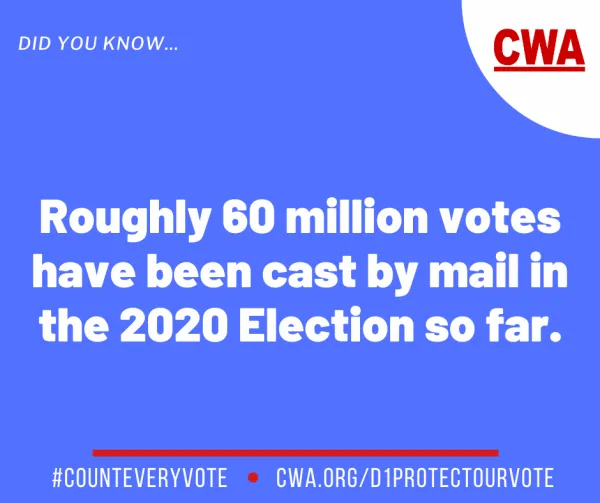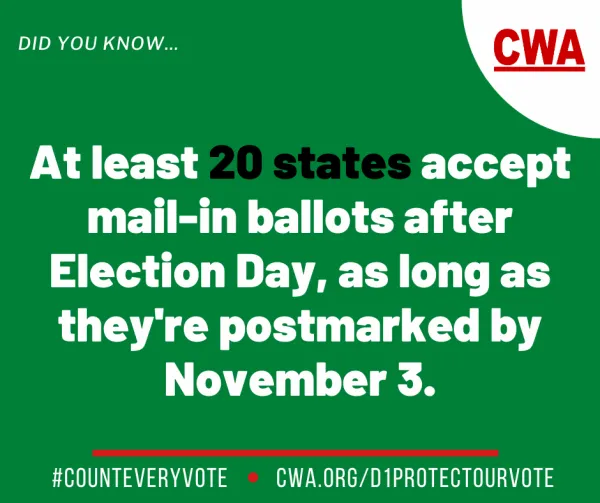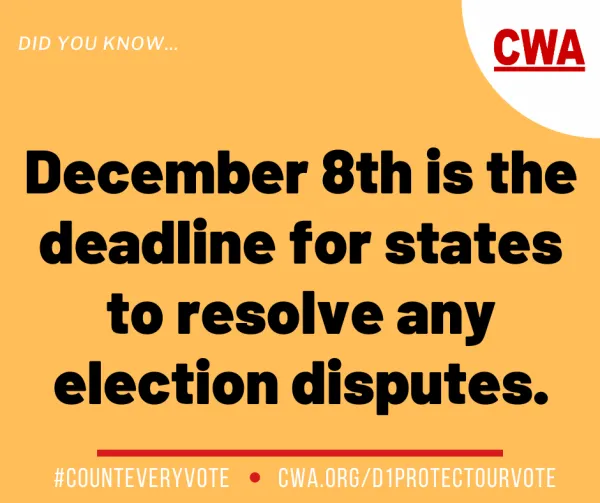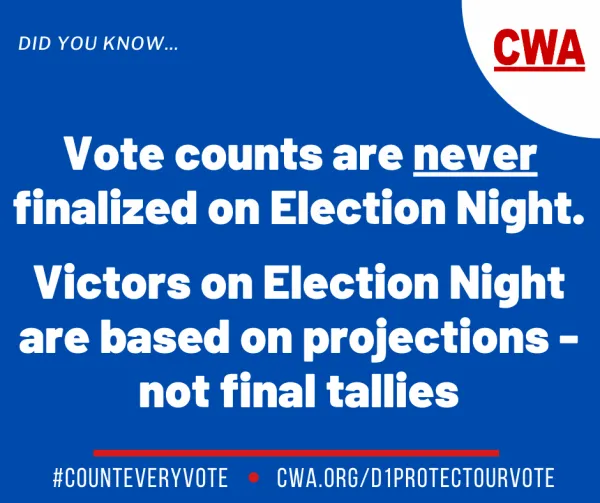Protect the Results
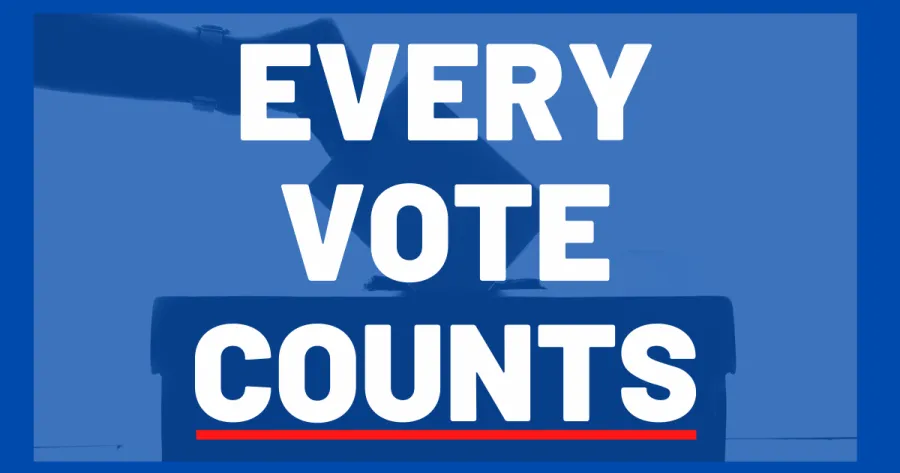
Voting in the 2020 election ends on Tuesday, November 3rd. While we’re used to seeing a winner declared on Election Night shortly after all of the polls have closed, the reality is that it's almost certain that we won't know the outcome of this election until a few days later - or maybe even longer. And that’s okay.
Facts
1. It is unlikely we will know who wins on Election Night.
Vote counts are never finalized on the night of the election - in fact, federal law gives states 5 weeks to certify their results. When victors are declared on Election Night, it’s due to projections - not final tallies.
We are seeing the largest turn out of mail-in ballots ever. As of October 21st, more than 80.5 million mail-in ballots have been requested throughout the country.
At least twenty states accept mail-in ballots after Election Day - including many battleground states.
For mail-in ballots received before November 3rd:
- 20 states count mail-in ballots as they’re received
- 27 states (plus DC) start counting mail-in ballots before Election Day
- 4 states start counting mail-in ballots on Election Day
- PA, WI, MS, AL
In addition to mail-in ballots arriving after Election Day, there are two other reasons that ballots may be counted after Election Day:
- "Cured" ballots: if a ballot is returned with a routine error - missing a signature, signature not matching what’s on record, missing a date, etc - states have systems to notify voters so they can correct the issue.
- Provisional ballots: a provisional ballot is used when there are questions about a given voter's eligibility that must be resolved before the vote can count. Once resolved, the vote can be counted, but because of the steps involved, they usually cannot be resolved until after election Day.
There may be disputes over ballot counting that could end up in legal proceedings, which would extend the time it takes to count ballots and declare the outcome.
2. On election night, we may see the “red mirage”
We could see an initial surge on Election Night for Trump with more red states counting ballots as they come in while battleground states count their votes later. This may make it look like he won, but it’s mostly states he was poised to win anyway - called a “red mirage.”
In many battleground states, more Democrats than Republicans have requested mail-in ballots which means that many Democrat votes may be counted after Election Day.
Historically, absentee ballots are more often cast by Democrats than Republicans - and those ballots are often counted after Election Day. Republicans are more likely to vote in person than by mail, meaning we may see early returns trending Republican but a big post Election shift towards Democrats. This is called a “blue shift”.
- A recent example is House elections in Orange County, CA in 2018.
3. What Are the Possible Scenarios on Election Night?
There are several different potential scenarios for November 3rd:
- Decisive Biden win on Election Night
- In addition to record numbers of mail-in ballots, we’re also seeing record numbers of early in-person voting this year. If Biden wins by a wide enough margin in key battleground states, the mail-in ballots won’t be a factor in determining who the winner is.
- Decisive Trump win on Election Night
- By the same token, if Trump wins by a wide enough margin in key battleground states, the mail-in ballot count will not be a factor.
- Too close to call; ballots still coming in that need to be counted
- One candidate or the other may be ahead in the counting by the end of Election Night, but the margin is small enough that the record number of mail-in ballots cast this year will be a factor in the final vote tallies and must be counted. If Trump makes no attempts to undermine this process, we’ll stand by and be prepared to mobilize in case it’s needed.
- Too close to call; ballots still coming in that need to be counted; Trump tries to undermine the ballot count and declare himself victor on Election night.
- Trump may declare based on Election Night tallies that he has won the election, and some media outlets (particularly Fox News) could follow suit even though more ballots are left to be counted that could swing the final tally.
4. What we need to do? Make sure every vote is counted!
Many labor unions and other organizations are coming together to plan for mass rallies in the days following the election, with this message: “Count Every Vote.”
We must prepare for a possible disruption to the Democratic process. This could look like:
- Interferes with or prematurely stops counting votes;
- Declares someone a winner who didn’t get the most votes; or
- Allows someone to stay in power who didn’t win the election.
Rhetoric about mail-in ballot fraud makes people alarmed, but it's baseless. States like Oregon, CO and Utah have been conducting their elections 100% by mail for years now with no fraud whatsoever.
5. What is the overall Election timeline?
November 3 - Election Day; unlike past years, we cannot expect to know who the winner will be tonight.
November 4 - November 12 - Many states will continue counting ballots.
December 8 - Safe Harbor deadline - this is the deadline for states to resolve disputes about the vote count and certify their election results.
December 14 - Electors for each state meet and cast their ballot.
December 23 - Deadline to submit electoral votes to Congress.
January 6 - Congress counts electoral votes.
January 20 - Presidential Inauguration
Materials
Video with CWA National President Chris Shelton
Flyers
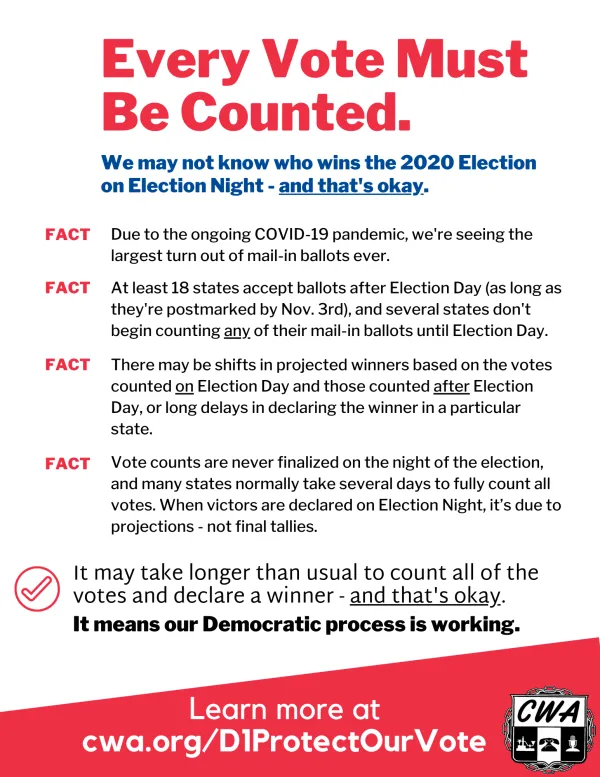
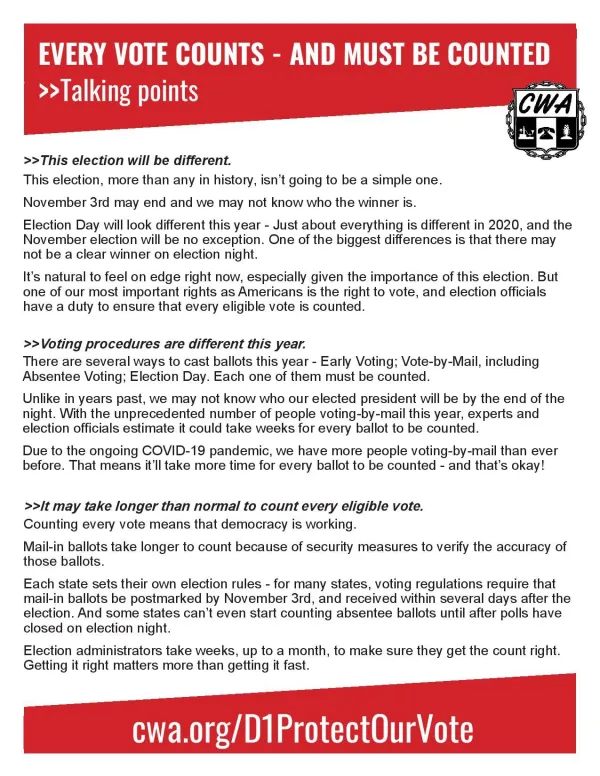
Social media graphics
